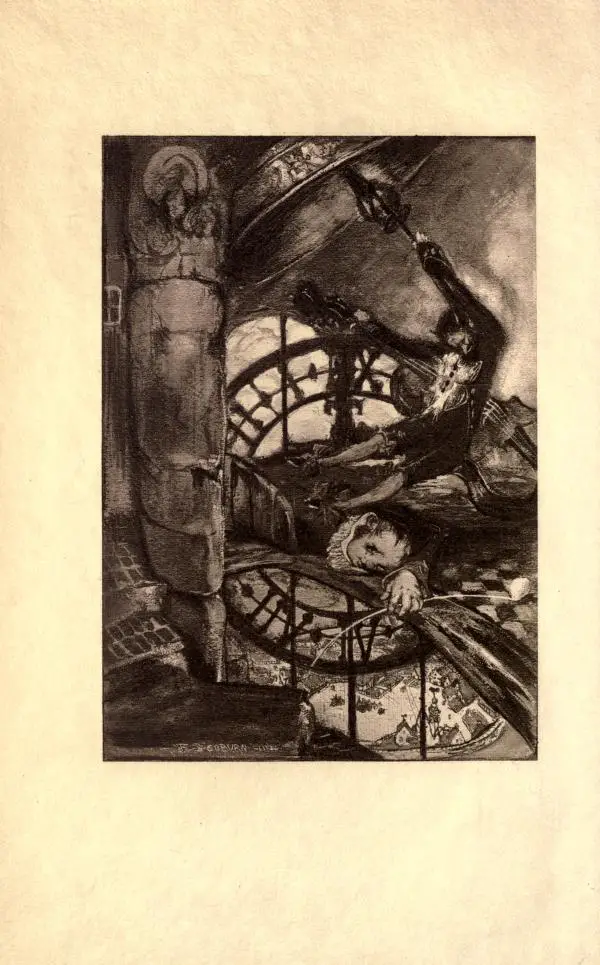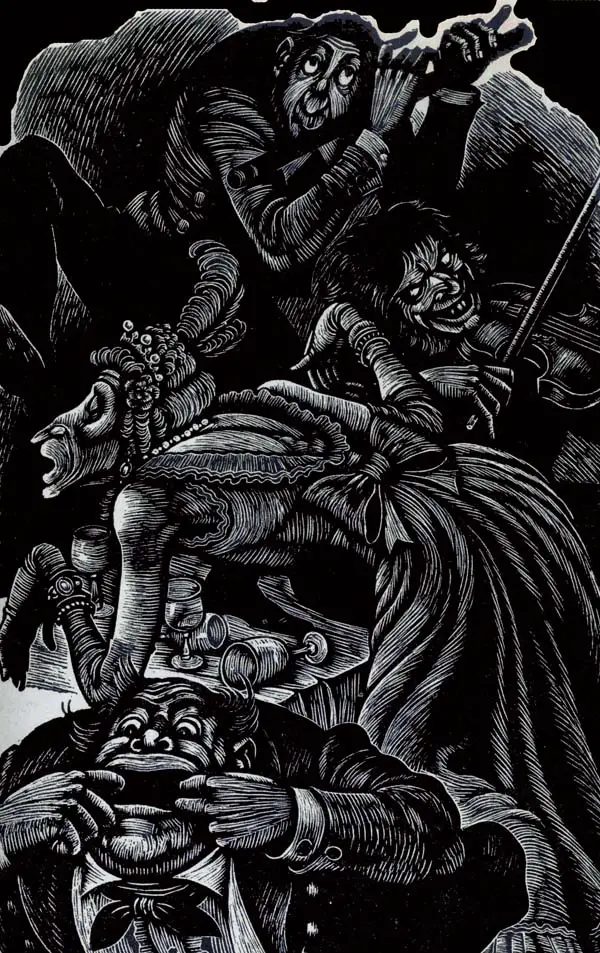The anniversary of the birth of the Master of Terror gives us the opportunity to analyze his mocking vision of the "real", of the world and of the past in an almost unknown branch of his work
On January 19, 1809 he was born in Boston Edgar Allan Poe. On the occasion of the 209th anniversary of his birth, we are publishing this contribution by Andrea Casella which focuses mainly on some of his lesser-known stories which, unlike other more well-known and "classic" stories, present themselves in the guise of "humorous farces". MM
Everyone knows Edgar Allan Poe, even those who have never read anything about him, says J. Cortàzar, and it's true: Poe is the first true pop icon of world literature. After all, even those who have read his work did not go beyond his poems and, above all, his claustrophobic horror stories. Yet, alongside these well-known writings, there are some, almost unknown, which present themselves as humorous farces, modeled on his earliest literary tests dating back to his school and college days. We mean, above all, stories like The Devil on the bell tower, The system of Doctor Tar and Professor Feather e Mellonta Tauta.
The first tells the comic events that took place in a fictional Dutch village called Vondervotteimittis, which in Dutch would mean, more or less, "What time is it?", So much so that in the epigraph to the story, Poe mentions what, according to him, would be an "ancient saying", and that is: "What time is it?" Such burlesque situations originate from the arrival of a strange character capable of upsetting, with a simple gesture, all the perfectly organized life of the inhabitants of the village.
The second story takes place inside a mental hospital in the south of France, where, according to the director in charge, a "gentle method" for the treatment of patients is experimented.
The third, on the other hand, is presented by Poe as the translation, performed by his alleged friend Martin Van Buren Mavis (whose name is evidently based on that of the president of the United States of the time) of a manuscript found by the author in a container afloat in the middle of the Mare Tenebrarum (a legendary sea that Poe often mentions in his stories), and is the account of a futuristic journey, set in the year 2848 aboard a "floating balloon", theLark.
As mentioned, the three stories have the appearance of comic stories, and as such they would certainly be counted by literary criticism, but it is enough to stop for a moment to reflect to realize the ferocious criticism that they emanate; a critique that targets the very structure of the system of values of modern man, living not in an effectively solid and real world, made of tangible "things", but on the contrary imprisoned within the evanescent, yet impregnable, walls of conventions and convictions without any actual confirmation.

And so, The Devil on the bell tower makes fun of the space-time coordinate system within which human beings organize their existential appearance, which immediately falls apart as soon as an ounce of chaos (and therefore of what underlies this appearance), personified by the little man who appears on the bell tower of the village, putting the clock ahead one hour, you enter this closed and perfect system.
The village itself evokes an ideal of perfection: no one has ever left it, not believing that anything else could exist outside it, it is composed of sixty huts (a reference to the sexagesimal system, in use since the Sumerians), in front of each house has a small garden, with a circular path, a sundial and exactly twenty-four cabbages, moreover, the village rises in a perfectly circular valley, flat and paved with smooth tiles.
The life of this village, organized in the smallest details on the trust placed in the "omnipotence" of the clock placed on the bell tower of the village, is upset by the arrival of a strange, ungainly midget who, mating and ridiculing the watchmaker always on guard on the bell tower ( a sort of Demiurge), replaces this by moving the hand of the clock forward one hour, one minute before the stroke of noon, so that the citizens no longer know what time it is, resulting in a total "Painful confusion".

The system of Doctor Tar and Professor Feather presents the French asylum as an upside-down world, in which the insane are actually the doctors and the attendants, and the healthy people are the insane. In fact, due to the sudden madness of the director in charge, Monsieur Maillard, the insane were released and, wearing civilian clothes, took the place of the staff, relegated to the containment rooms and covered in tar and chicken feathers.
Needless to say, to the unsuspecting visitor of the asylum, the protagonist of the story, everything seems in perfect order, as Monsieur Maillard speaks and acts in an absolutely reasonable way, and so do the mad, except for some momentary inexplicable tics. Also in this story we witness the destruction of the established order in favor of an alternative system: in this parallel world those who rule are the madmen, notoriously unaware of the logical principles of non-contradiction and therefore indifferent to the conventions imposed by civil life.
The fact is that the mad, behaving reasonably enough, set up a world that is like the copy of the one they have replaced, only "more cheerful", so much so that the unsuspecting visitor is involved in a sumptuous banquet where the wine flows. rivers. Unfortunately, the attendants (whom the visitor obviously mistakes for the madmen freed from the dungeons) intervene and take over the madmen, putting an end to that upside-down world. But the question remains, nagging: who were the real madmen? Monsieur Maillard's admonition, in the middle of the story, is indicative:
«Believe nothing of what you hear and believe only half of what you see. "

The third story, Mellonta Tauta, the Greek phrase for "Things of the future", is fundamentally a ruthless taking for the bottoms of historicism, that is, the claim of a certain reconstruction of the past starting from a few residual archaeological / literary fragments. The report of the future traveler aboard the balloon is a comically distorted overview of the world of the past, which then corresponds to "our" world, where the names of places, things and people are funnyly altered and misunderstood, such as the "disappeared" continents of Iuropa and Aiesa, or the ancient tyrants Zerone and Hellofagabalus, or the alleged Hindu philosopher Ariete Stotele.
Silk, which was used "five hundred or a thousand years ago" is called “A fabric worked from the bowels of certain earth worms. They fed them with mulberry blackberries, a fruit that looks like water melon, and when they were properly fat, they ground them with a millstone. A mixture called papyrus was made from that pulp, as it appeared at the beginning, and which then passed through a series of manipulations until it became 'silk' ". It goes without saying that this reconstruction of the silk production process is completely wrong and confusing, as well as ridiculous, for us who know well how it is obtained.
Last but not least, and here the particular criticism of American historiography is evident, the customs of what the traveler defines as "the tribe of the Old Yorkers", that is the present-day inhabitants of "New" York, are exposed. The discovery of a tombstone is described, the inscription of which says that it was placed on October 19, 1847 for a memorial to George Washington on the anniversary of Lord Cornwallis' surrender at Yorktown in 1781. Obviously, the traveler completely misunderstands the meaning of 'inscription, mistaking Yorktown, which is a locality in Virginia, for the city of New York, and General Cornwallis for a grain merchant (it would be inferred from the name "corn"). Furthermore, the surrender of the English general in battle is understood as his "surrender" to the natives for some obscure reason ("The only problem is because the savages wanted to take him"; probably, he thinks: "For the purpose of making sausages").
In the comic general misunderstanding, the prejudice of the progressive attitude emerges, according to which the past is invariably the realm of the absence of reason and backwardness. But this is just a prejudice ex post, father of a reconstruction, for us "present", who know how things went, completely untrue and absurd. The reality of the past is "other" than what we ourselves imagine on the basis of mere successive reconstructions, supported by a few tangible data and irreparably polluted by unfounded opinions.
The world that emerges from these "comic" tales of Poe therefore presents itself as a garish garment in its insubstantiality, lowered on the true being of things like a veil of Maya. This reality is real only in relation to us, since it was agreed to treat it in this way, but the truth is quite "different", as long as we "sharpen our eyes more carefully" (other topos obsessive of Poe's tales). Poe's Gnosticism tears apart the ideals of modernity, with all their plethora of inconclusive corollaries; it makes a mockery of the ideas of freedom, of the Republic, of religion, of universal equality, intellectual and bookish artifices that have no confirmation in the nature of things. In those same years, on the other side of the Atlantic, a certain Giacomo Leopardi was engaged in a solitary battle, prodigiously similar, sometimes fought with harsh and pathetic tones, as in the Zibaldone And in the Canti, sometimes, in the manner of Poe, through parody, as in the Paralipomena to batrachomyomachia. And in the same way as his American contemporary he was vox clamantis in desert.
Bibliography:
- Edgar Allen Poe, Tales (1831 - 1849). Einaudi, Turin, 2009.


4 comments on “Edgar Allan Poe and the criticism of the real in humorous farces"